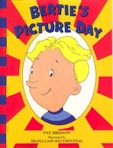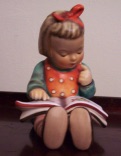Ideas for using
BERTIE'S PICTURE DAY
in the classroom
Bertie is determined to look his very best for his second-grade school picture on Monday. In fact, he even plans to wear his red polka-dot bow tie. But before the weekend's over, Bertie loses a front tooth, gets a shiner, and receives a "terribly interesting haircut" from his little sister, Eloise. "Early chapter book readers will relish this child's unique, irrepressible personality. ..This is a surefire hit of a sequel." School Library Journal
In The Square Hole, Bertie's mom tells him not to think about his loose tooth. She says, "A watched pot never boils." What do your students think this proverb means?
Here are some more proverbs for your students to think about. Have them work in groups to decide what each proverb means and then share their answers with the rest of the class. Can they think of other proverbs?
A bird in the hand is worth two in the bush.
A stitch in time saves nine.
Measure twice, cut once.
Don't count your chickens before they hatch.
Every path has its puddle.
How many teeth does a baby have when it's born? None that we can see, but the buds for a person's teeth start to grow 7 1/2 months before the person is born! Provide your students with mirrors or ask them to bring one from home. How many teeth do they have? Unless they've lost some already, children should have twenty teeth. Make a classroom chart showing how many students still have all twenty teeth, how many have nineteen, eighteen, etc. Adults have 32 teeth unless they've lost some. Can your students think of a reason why adults have more teeth?
Baby teeth are also called deciduous teeth. Explain to your students that deciduous trees have leaves that fall off in the autumn. Ask them if they think the baby teeth or the permanent teeth are called deciduous teeth.
Different teeth do different things. Incisors and canines are sharp and are used for cutting and tearing food. Premolars and molars are flatter on top and are used for grinding food. Which teeth did Bertie and Eloise lose in the story? (Incisors)
Teeth are important for eating, and also for talking. Have your students work together in small groups to discuss how different sounds are pronounced. Which sounds do we need teeth in order to pronounce correctly? Invite a speech therapist to your classroom to discuss their findings with them.
The note Bertie receives is signed T.F. Ask your students who they think these initials stand for. Play a game with them where you call out the first and last initials of someone in the class and they have to figure out who it is. Tell the person with those initials to keep silent.
Sometimes things are called by their initials, because it saves time. Can your students figure out what the following stand for: PO, USA, NJ, ASAP, CPU ? (post office, United States of America, New Jersey, as soon as possible and central processing unit) Sometimes the initials are more familiar than the words - NBC, CBS and ABC are good examples of that. And sometimes, the initials become a new word! Self Contained Underwater Breathing Apparatus became scuba, for instance. Ask your students to come up with examples on their own or ask at home for some examples to share with the class.
How much of a person's body usually shows in school pictures? Tell students that a painting or photo of the upper part of the body is called a portrait. Have your students use their mirrors in order to draw self-portraits or pair them up to do portraits of each other. Discuss what they think is the most important part of the face - the eyes, the mouth, the nose, the chin, the forehead, the cheeks?
Illustrator Diana Cain Bluthenthal gets a lot of expression in the characters faces. How does she show that Bertie is excited on page 28, and angry on page 54, that Eloise is sad and sorry on page 55, that Bertie's mom is surprised on page 58?
Ask your art teacher to provide some examples of portraits or give a mini lesson with tips for drawing portraits or individual facial features. If a camera is available, let students take turns taking portrait shots of each other. Compare the drawn portraits with the photos.
Have your students played kickball like Bertie and his friends? It is similar to baseball, but there are some differences. Make a class list of how the games are similar and how they are different. Take a classroom poll to see which game students prefer to play.
Bertie enjoyed reading his library book. He wanted to see how it ended, but he didn't want it to be over. What are some of your class's favorite books? Ask each child to write down three books they enjoyed reading or having read to them on a OUR FAVORITE BOOKS chart. Have them booktalk one of those books to their classmates. Remind them that they need to tell enough about the book to get others interested in reading it, but not so much that they spoil it for others.

